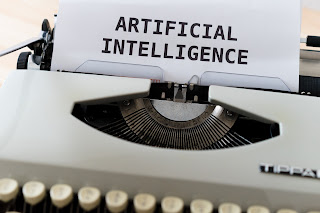A rapidly expanding field of computer science, machine learning is an important extension of artificial intelligence (AI) that emphasizes the use of data-driven formulas designed to replicate the manner in which humans learn. Over time, these algorithms allow computers to improve accuracy and optimize functionality across a wide range of industries and aspects of life.
Arthur Samuel of IBM is credited with first using the term “machine learning” in 1962 as part of a research project that saw an IBM 7094 computer defeat checkers master Robert Nealey. While the computer’s victory pales in comparison to modern uses of machine learning, it nonetheless remains a touchstone in the development of AI processes.
Today, machine learning impacts a surprising amount of everyday life. Examples range from emerging self-driving car technology to streaming platforms like Netflix using viewer history to make recommendations for similar titles.
As a branch of AI, machine learning can be differentiated from deep learning and neural networks. The easiest distinction to be made is that deep learning functions as a subset of machine learning, while neural networks represent an extension of deep learning.
Deep learning differs from machine learning in that manual human intervention is minimized throughout processes, particularly during the extraction portion of algorithmic learning. This allows for the analysis of much larger data sets and for users to significantly scale an organization’s machine learning capabilities. That said, data must be carefully prepared and defined in order to offset the lack of human oversight.
Neural networks, meanwhile, involve the use of multiple node layers and thresholds to monitor data activity. Sometimes referred to as artificial neural networks (ANN), neural network processes can be applied to any machine learning initiative that utilizes more than three layers of activity.
The COVID-19 pandemic has underscored an increased need for machine learning services around the world. Specific examples of machine learning use during the pandemic include researchers harnessing algorithms to determine the effectiveness of various quarantine measures and social distancing precautions.
That said, machine learning has grown exponentially in retail spaces as well. Amazon and eBay are just two of the many large e-commerce companies using machine learning technology to improve the customer experience and drive sales.
As noted above, self-driving car technology is an important area of growth for machine learning developers. Automated algorithms are critically important when it comes to cars assessing real-time environmental changes and predicting potential obstacles or other driving issues. The driverless segment of the auto industry alone is expected to grow to nearly $65 billion by 2026.
The machine learning global market reached $11.33 billion in 2020, a 36.2 percent increase compared to year-on-year growth from 2017 to 2019. The market approached $15.5 billion in 2021. The industry is estimated to grow by a compound annual growth rate of 38.6 percent through 2028, when the market is expected to exceed $152 billion.
It should be noted that the machine learning industry faces unique challenges in regard to future growth. Facial recognition technology, for example, remains a controversial application of machine learning. Meanwhile, “deepfake” content generated by AI technology is considered by many to be a threat to national safety, though machine learning supporters point to Responsible AI licenses (RAIL) as a method for limiting illegal access to and use of machine learning software and related AI capabilities.

